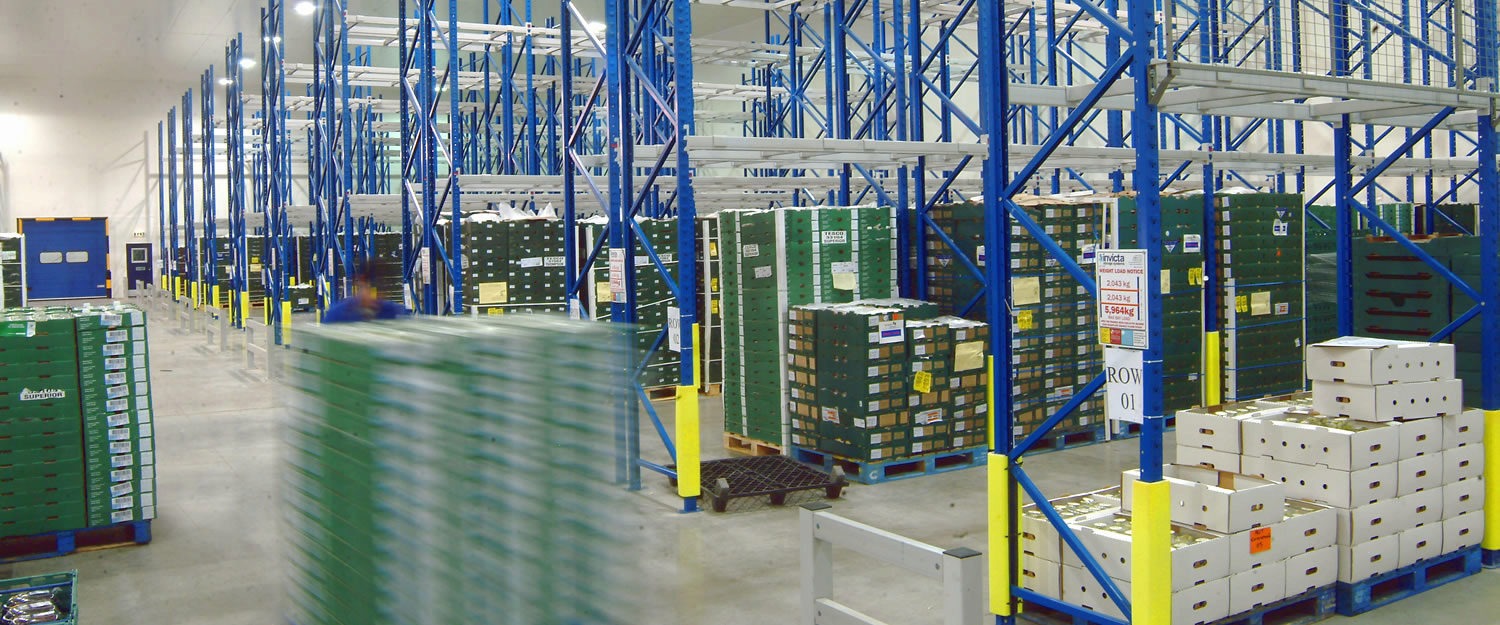For your information
You are being redirected to one of our divisional subsites which contains more detailed information on the required division. To navigate back to the main Invicta Group site, please click the link found in the footer at the bottom of the page.
Why autonomous mobile robots are the future of warehouse storage
22nd April 2022
Racking the mainframe
Quick Quote
Contact Mick Coyne
To get a quotation or arrange a free site survey - Call Mick Coyne on
-
 UK
UK
Current location:
Quick Quote
Contact Mick Coyne
-
 UK
UK
Current location:
Warehouse space is a finite resource, and the prices continue to reflect that. While new spaces are being built, including new facilities in towns and cities, much of the developed world is reaching a critical juncture in terms of storage space versus demand. As costs continue to rise, firms will increasingly have to optimise the storage space they have.
One way of unlocking additional space may be the use of advanced robotics technologies. One of the most exciting developments here is the rise of autonomous mobile robots, and how they can unlock additional space. By combining these robots with even higher density racking, facilities could solve their storage problems for decades to come.
What are autonomous mobile robots?
Autonomous mobile robots (AMRs) are a more specific term for an emerging form of automatic guided vehicles (AGVs). You may be familiar with the concept of AGVs, which are best described as partly autonomous. These vehicles transport goods along strict guidelines, using infrastructure such as wires, rails, or sensing lines on the floor using lasers to move around a space. They are not truly autonomous in the sense that they can only go where they have been programmed to go, and have no real understanding of the space around them, only using sensors to detect and avoid collisions.
Autonomous mobile robots, on the other hand, are autonomous in the truest sense. These robots can be sent all around a warehouse using an advanced series of sensors, travelling vertically or horizontally around a warehouse or across racking. These are commonly split into two variants: pick optimisation robots help to deliver items to human operators to eliminate inefficiencies in picking, while fleet management robots are used to transport large goods such as pallets to and from delivery vehicles. Both can easily be implemented side-by-side, and both can fall under the control of an advanced warehouse management system (WMS).
The benefits of truly autonomous robots are obvious. Rather than carrying out a very narrow set of instructions within a confined space, an AMR can be programmed to carry out a wide range of tasks on a dynamic basis. Using wireless communication, tasks can be issued to the AMR as the situation changes, with the robot acting in response to demand. More advanced sensors also mean greater safety and operability on a variety of terrain, helping to integrate the robots into a wider range of warehouse environments.
How can autonomous mobile robots help to save space?
Autonomous mobile robots have a range of uses, and benefit hugely from their flexibility. However, perhaps their most relevant and useful feature for the future of storage is how they can interact with racking. AMRs can pack an enormous amount of power and utility into a small frame, and navigate smaller spaces with greater precision than human operators. As a result, they have the potential to transform the way racking is designed, and thus the space it occupies.
By utilising a variety of different sensors and advanced algorithms, AMRs can communicate with a WMS or similar system to fulfil tasks autonomously, and to sense the environment around them. This allows them to quickly, efficiently and safely navigate spaces and retrieve or place objects – something which could allow for racking to be made even more dense.
AS/RS systems already allow semi-autonomous vehicles to travel up and along racking to fetch goods at different elevations, and bring them back to a collection point. With more advanced AMRs, these robots could carry out these tasks fully autonomously, and even mount or dismount from the racking to take the goods to different areas.
Something akin to this can be seen in Ocado’s advanced grocery warehouses, where robots automatically pick produce from supplied crates, and deposit items for given orders. This racking design is completely unique, with pallets stacked vertically in a space that’s almost inaccessible to human operatives – a sign of what may be to come for other storage firms.
How can I use autonomous mobile robots in my business?
While some applications of AMRs remain on the cutting edge of technology, there are more standardised uses of these robots that can benefit smaller firms. The concept of an AMR which can expedite part of your storage or logistics process is already well established, and the means of accessing these technologies are becoming more democratised and more cost-effective.
Robots as a service (RaaS) companies are now thriving based on a novel new business model – renting robots to storage, production and logistics firms. By renting robots, you not only save yourself from the large capital investment required to buy robots, but also divest your responsibility for maintaining them and upgrading their software.
Beyond this, you also gain the ability to easily scale the use of AMRs in your business. RaaS allows you to test a limited number of robots or autonomous vehicles in your work environment, to see how they integrate with your WMS and workflows. You’ll also have greater flexibility in how you upgrade, with the potential to quickly move to new technologies that will benefit you.
Beyond this, you will want to look at how compatible your racking is with the robots you choose. While a RaaS company will usually have a variety of models to choose from, your racking could be a severely limiting factor. Not only may your racking not be compatible with a range of robots, but you may also not be getting the most out of them if your racking uses more space than they require to operate.
—
The world of autonomous mobile robots and vehicles is fast-developing, and it can be tempting to perceive it as a risk not worth taking. But the benefits being seen by thousands of businesses, the use of robots by many industry leaders, and the growing availability of AMRs all mean that you could quickly find yourself being left behind if you opt against investing.
What is critical is that you do not choose an AMR solution in isolation, and without considering the dynamics of your storage space. By working with a racking provider, you can ensure that your racking is optimally designed to support AMRs, and that it only occupies the space they need – creating more space for you to expand and develop into. To learn more about integrating automation with your warehouse racking, get in touch with us today.
Accreditations & Affiliations







Start your project
Tell us about your project. Please complete this form. One of our sales team will come back to you with more details. If you prefer, you can drop us an email.




Share/Like this page